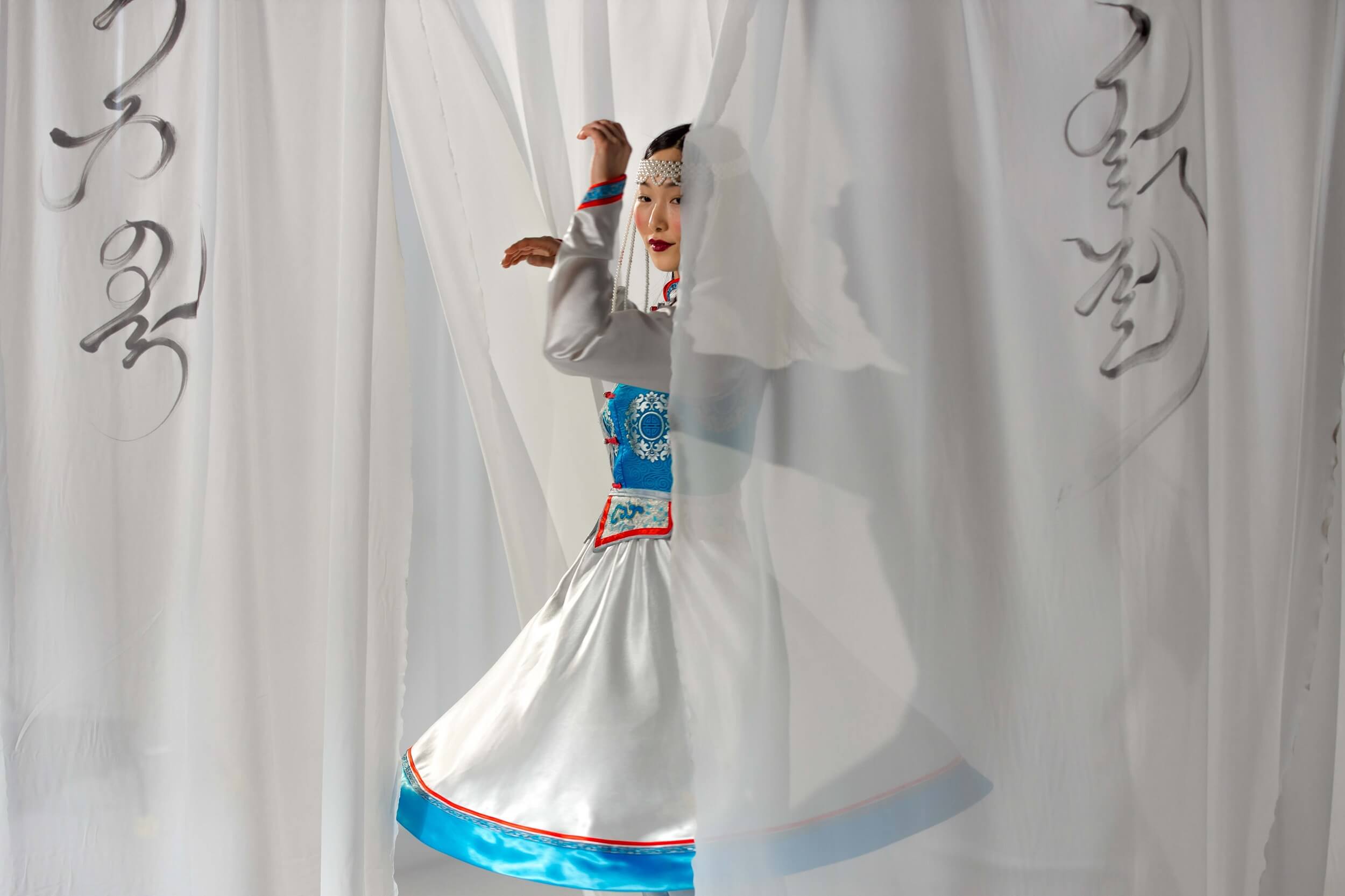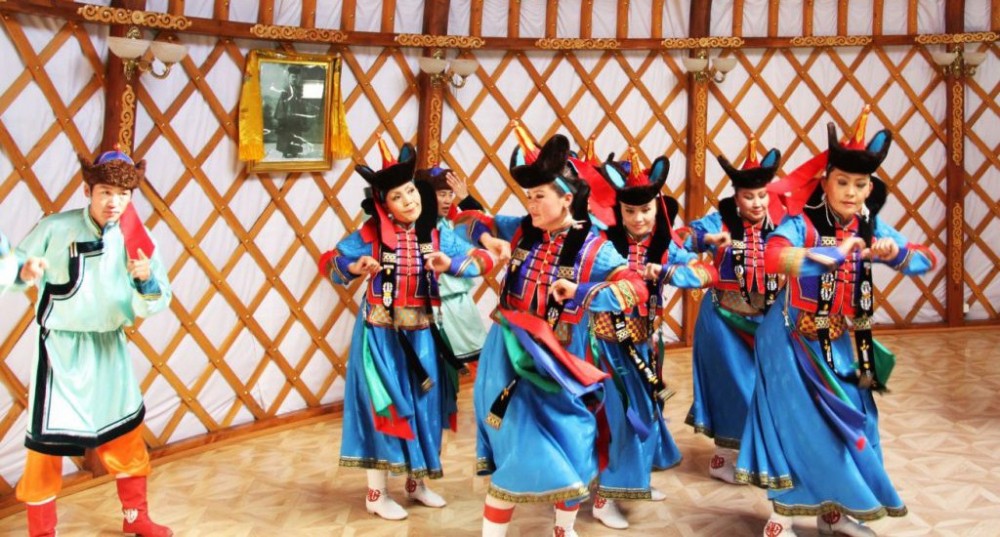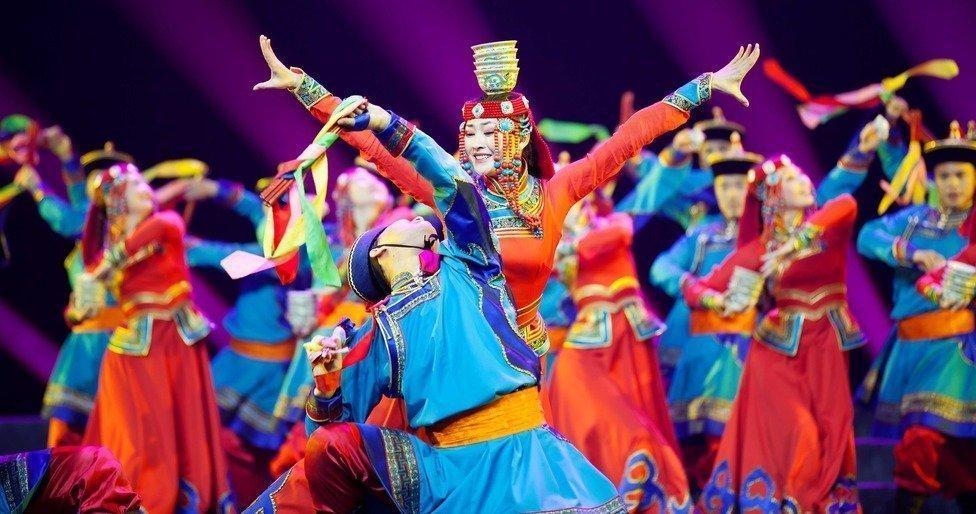Mongolian traditional folk dance is an important part of Mongolian cultural heritage. It is a form of expression that allows Mongolians to express their feelings and emotions. Mongolian traditional folk dance is also a way for Mongolians to communicate with each other while promoting family unity.

There are 3 types of Mongolian dance.
- folk dances
- historical dances
- and classical dances.
Folk Dance
Folk dances are widely practiced and have developed over time to express the life dreams and morals of a people through their movements. In every way, stage dancing differs from folk dancing, but folk dancing is actually the source of all dance forms.

In Mongolian Khalkh dance, the motifs of mountains, rural life, the excellent horse, and a lovely hero predominate. The movements of their job, such as milking milk, spinning wool, and raising their heads, are incorporated into the performances by Khalkh women.
The dances of other Mongolian tribes greatly contribute to the art of Mongolian dance.
- Torg people’s “agsal” and “tsatsal” dance. The “Agsal” dance conveys the story of a Torgo hero.
- The Dorvod people’s “cup dance,” which involves women dancing with a cup of milk on their head without spilling it, is based on flexible movements with moderate chest vibrations.

The primary motion of Western Mongolia dancing is chest movement, which is fitting since the dance is commonly performed in circles with sitting participants.
- Khasag dance has a lot of quick movements of both hands and head and shoulders, and the transition from one movement to another is fast.
- Buriad people’s “Khatir” dance is also characterized by rapid head and foot movements, and most of them have songs. Buriad round dances such as “yohor”, “yeekher”, “eremshih”, “nirgelgee” are well known.
Biyelgee Dance – Mongolian traditional dance
The Biye Biyelgee Dance is a Mongolian traditional dance that has been performed since the days of Mongolian kings. The dance is characterized by its fast movements and the movement or chest and hands played main roles.
The dancers principally use only the upper part of their bodies, and through their rhythmic movements, Biyelgees dance embody aspects of Mongol lifestyle including household labor, customs, cultural heritage, and traditions, as well as spiritual characteristics tied to different ethnic groups.
The Biye Biyelgee Dance was originally performed by nomads (usually during family and community events), and no one has been able to reproduce it into a classic folk art form since. They convey nomadic way of life simultaneously expressing distinct ethnic identities
The Biyelge dance is considered the founding mother of Mongolian national dances because it encapsulates and originates from the nomadic lifestyle. They go well with traditional Mongolian music.
History: A study conducted by S.Soronzonbold, a State-Honoured Music Scholar, found that the Biyebiyelgee dance might have originated during the Hun Dynasty.
Furthermore, Mongolian Secret history — the largest source of Mongolian history and culture from the 13th century—reads “Mongolians had a wedding festivity around a large tree by dancing till the land becomes curved from the stomping”.
Interesting facts about Biyelgee Dance:
- Uzemchin, Torguud, Uriankhai, Zakhchin, Kazakh, Uuld and Durvud are some of the Biyelgee dialects. Choreography is varied and abundant since people in various areas of the nation utilize distinct methods to communicate their emotions.
- The biyelge dance is usually only performed in a small space, like inside a ger (nomadic dwelling), so the dancers don’t move their feet much. They are typically in stay seated, half sitting or cross-legged position. Since the biyelegee dance was often performed with many people present in a small space, chest and hand movements became central to the performance.
- The clothing and accessories worn by Biyelgee dancers are specific to their ethnic group and community, and feature color combinations, artistic patterns, embroidery, knitting, quilting and leather techniques, as well as gold and silver jewelry.
- In July 2013, over 5200 Mongolian performers in traditional dress broke the Guinness World Record for the biyelgee dances. This event drew dancers from more than 10 ethnic groups, who danced their own interpretations of “Gaits of Ambler Horse” and “All-Mongolian Motto.” The oldest performer was an 82 year old woman while the youngest was a 3 year old boy.

Historical Dance
Historical dances are based on historical events and aim to realistically show the audience the life, customs, morals, and clothing of people during a specific time period.
The palace dances of ancient Mongolian kings illustrate the ethnic life at that time while also expressing the basics of folk dances embedded within it.
According to the 21st book of the “Yuan State Sutra”, at that time, in the palaces of the kings, there were ceremonial dances such as:
- “Dances for Honoring Learning”
- “Dances for Offering Liquor at the Base of the Supreme Heavenly King”
- “Dances for Offering Liquor at the Mother of All Earths”
- “Dances for Offering Liquor at the Base of Taizu”.
These dances have separate movements, and each time the tambourine is played, one dance movement is replaced by another. In addition to these ceremonial dances, there was also a ceremonial dance called “Ancestor’s Temple Dance” that was performed at that time.
The oldest form of Mongolian dance is shaman dance, and the last form is tsam dance. In the tsam dance of the temple, many dances were based on the oral stories of the Mongolian people.
Classical dance
The term “classical dance” refers to a style of dance that evolved from folk dances and is frequently inspired by them. Since long time ago, modern Mongolian dance with distinct meaning and movement has been developed on the theater stage in Mongolia.
For example, dances such as “festival wrestlers“, “our clothes festival”, “holiday morning brown hill”, “horseman”, “two guys fire festival”, and many others were performed by famous dancers and choreographers including Luvsangombo, Tserendulam, Gombo, Radnaa, Ichinhorloo Sevjid , Majigsuren Gochoosuren and Nanjid.
Hello. My name is Anujin. I was born and raised in Ulaanbaatar, the capital city of Mongolia. I am senior writer at CorrectMongolia, where I share the culture , tradition of my country.
If you have questions about Mongolia, don’t hesitate to ask. I’ll be happy to help in any way that I can!
Related Content:
Mongolian culture, heritage, and traditions
Share to Public

